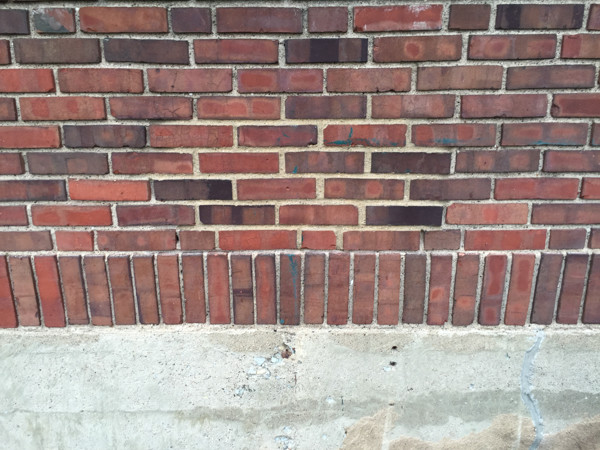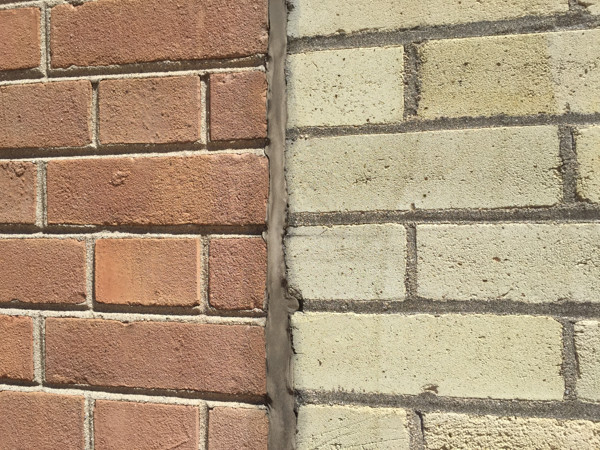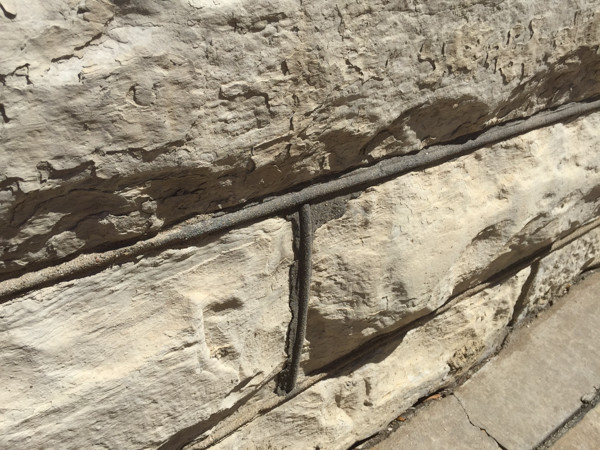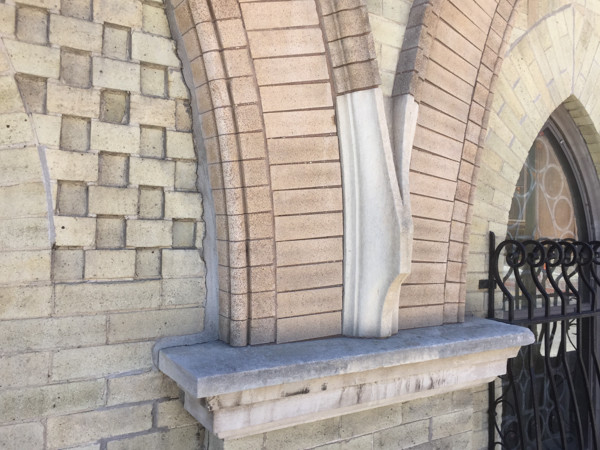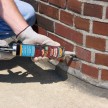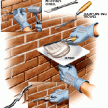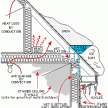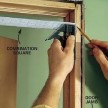Common Mortar Joint Profiles
Common Mortar Joint Profiles
Next time you’re out and about take a look at the masonry buildings near where you work and live. Do the mortar joints disappear into the brick and stone or do they contribute to the look of the facade? Are they recessed from the surface or are they proud of the surround masonry units? Color of the mortar and width of the joint have a lot to do with the look but so does the mortar joint profile. Read on for the most common ones you’ll see and their contributions to the look and weather-tightness of the building. All of the following pictures (except the concave mortar joint) were from a recent tour of the Miller-Coors Brewery complex in Milwaukee, Wisconsin.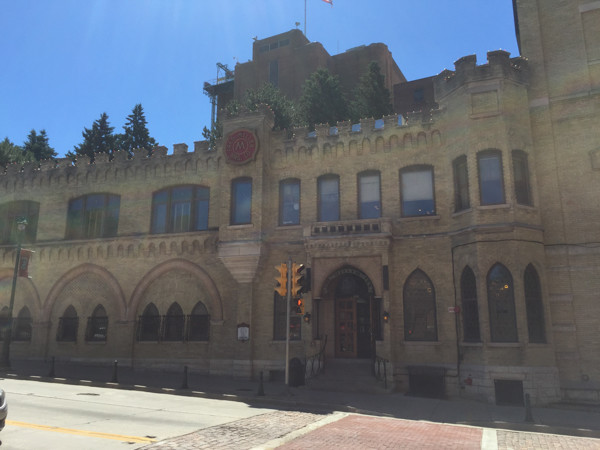
Concave Mortar Joint
The concave mortar joint is the most common one you’ll find in this day in age. It is one of the easiest to do and it offers a high level of weather protection. New construction with masonry, whether it be concrete block, brick, or stone, use this joint almost exclusively. Once the mortar is out flush with the surface, the mortar joint is struck with a brick jointer. The jointer keeps the mortar flush to the bed on the masonry units while slightly concaving the middle of the joint.
The brick jointer comes in multiple sizes and compositions. Most are made from steel with sizes ranging from 3/8″ to 3/4″ going up in 1/8″ increments. They don’t need to be steel though. Often times we use an oak stick to tool the joints. It exposes more of sand in the mix to give the joint a more weathered appearance. In the masonry restoration industry, the ability to blend new and old masonry is what pays the bills.
As far as aesthetics go, the concave mortar joint contributes to the look of the masonry units without over powering them. You can see it in the image below. The concave mortar joints are right in the middle of the image where a mortar color sample is in place for architect approval. The surrounding joints are raked joints
Flush Mortar Joint
The flush mortar joint is exactly what it sounds like. The joint is flush with the surrounding masonry units. This joint is most often used in split or rock-faced stone installations. For example, my front step is clad with split-faced stone. The flush joint helps bridge any differences in height between adjacent stones, keeps water from pooling, and dirt from collecting in any low spots. It also minimizes trip hazards, something very important in a walking surface.
Flush mortar joints are even simpler to install than concave joints. The only tooling that needs to be done is to use a stiff bristle brush and a little acid to clean off any mortar smear on the surrounding units and give the joint a uniform look.
A flush mortar joint contributes to the surrounding masonry units about equally. Although the wider the joint, the more noticeable it will be. The flush joint is very useful for wide joints but that also means the surrounding units are probably very large too. Flush joints are also very popular on facades utilizing common brick. The image below has flush mortar joints in the common brick on the right and Vee joints on the face brick on the left. Notice the shadow lines created by the Vee that are not present on the flush joint.
Beaded Mortar Joint
The beaded mortar joint is used almost exclusively in historical restorations. Think of this joint as having a raised bead on top of a flush joint. In my region of the country these are most often used on stone buildings. Mortar joints on stone buildings tend to be larger and can have more variation so the bead makes the joint look uniform in size even though it may not be. The bead can be either square or round in profile.
With the bead being higher than the surrounding masonry units, it makes the mortar joint part of the visual experience. Beaded joints can be much more noticeable. An interesting way to combat this and trick the eye into seeing a smaller joint is to use a matching color (to the surrounding masonry) for the flush joint and then a contrasting color for the bead. This technique is also the original meaning of the term tuck pointing.
Raked Mortar Joint
The raked mortar joint is also a joint used mostly in historical restorations. It has lower resistance to weathering than the other common joints so it is used when historical accuracy is important. Think of the shape of this joint as being a flush joint that is raked back below the level of the surrounding masonry. It’s flat bottom could be as subtle as a 1/4″ or as much as 3/4″. The deeper the joint the less impact the mortar joint has on the overall color of the wall.
As I mentioned this joint has lower resistance to weather because it exposes the bed of the masonry below the joint. Water can sit on this bed joint and slowly be absorbed into the wall assembly. As the freeze/thaw cycle happens, this joint can fail faster than the other joints discussed above.
In my region of the country, architects loved the raked joint the first half of the 20th century. A number of these structures are now historically significant or in historic districts so any repairs to the exterior masonry have to mimic original work.
Mortar Joints Around Town
Take a look at your own house or structures that you frequently visit. What kind of joints to they have? Some buildings may have a number of different joints depending on the repairs done to the building. Some ornate brick buildings may even have butter joints. That’s when the mortar joint is very, very thin. It can make future repairs difficult but are very beautiful.




